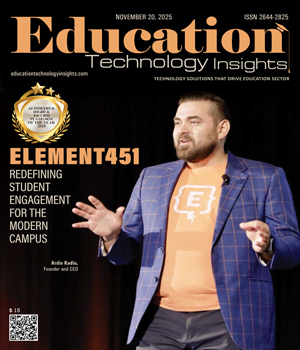THANK YOU FOR SUBSCRIBING
Be first to read the latest tech news, Industry Leader's Insights, and CIO interviews of medium and large enterprises exclusively from Education Technology Insights
Create Student Engagement Opportunities to Foster Deeper Understanding
Dr. Michael Mills, Vice President, E-Learning, innovation and Teaching Excellence, Montgomery College
 Dr. Michael Mills, Vice President, E-Learning, innovation and Teaching Excellence, Montgomery College
Dr. Michael Mills, Vice President, E-Learning, innovation and Teaching Excellence, Montgomery CollegeEvery college faculty member has experienced it – the look of genuine disinterest from students as you are trying to engage them in the learning process. As much as we want to place that disinterest at the feet of the students, much of the focus needs to shift to ourselves. We need to find ways to create active learning opportunities for students.
Astin (1999) developed a theory of student involvement that posits that a student’s learning and growth in any educational program is proportionate to how often a student is involved and the quality of involvement. Using that theory, we can drill down from educational program to classroom experience. Creating learning opportunities that allows for strong connections with the faculty member and amongst students enhances the involvement. Tinto’s Model of Institutional Departure (1993) suggests that students will persist if they engage in academic systems that are both formal (academic performance) and informal (faculty/student interactions).
Involvement in the classroom is essential to a student’s growth. The technological ecosystems deployed at many of our institutions allow for a variety of opportunities for faculty to engage students in the material, fostering deeper understanding. These ecosystems are relevant whether the class is fully online, hybrid or on-campus.
Below are a few examples to create student involvement:
• Create a learning community
Use a learning management system discussion board to allow students to post their work. This creates an audience of peers, instead of only the faculty member. Use the discussion board to require students to think about, explain, or apply material they learned. Refrain from closed-ended questions.
• Create opportunities for students to be a partner
Use the ideas of open pedagogy, let students help identify the direction of an assignment, including deadlines and assessment criteria. Students react better when they can see themselves or their life’s situation in the material.
• Create just-in-time polls
Use polling apps like Poll Everywhere or Mentimeter or those features built into video conferencing platforms to get immediate feedback from students. Ask them to assess the effectiveness of a particular day’s class session or to provide guidance on what content should be further explored.
• Create opportunities for students to share work
Use screen-sharing features of video conference systems to allow students to share their projects.
• Create time for social annotation
Use tools such as hypothes.is that allow for students to annotate writings. Similar to writing in the margins of a book or paper, social annotation creates opportunities for students to comment on a piece of writing and then respond to other comments.
• Create back-channel chats
Use the chat function of video-conferencing software or social media apps such as Twitter or GroupMe to create opportunities for students to talk in real-time or after a class session. This discussion allows for less formality and may be seen by students as making faculty more approachable.
Read Also
Goldilocks Regulation
Beyond the Quiz: Redefining Competence in eLearning
Beyond Theory and Into Monday Morning: Enhancing Graduate Programs for Teachers
Safeguarding Students in the Age of Deepfakes: An Educational Imperative
Delivering Excellence in Education through Transformative School Leadership
Curriculum Innovation for Student Success and Institutional Growth

I agree We use cookies on this website to enhance your user experience. By clicking any link on this page you are giving your consent for us to set cookies. More info






















